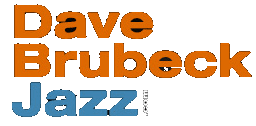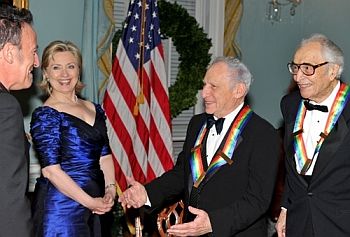
.jpg)

Hillary Rodham Clinton , Secretary of State
Benjamin Franklin Room Washington, DC December 5, 2009 Kennedy Center Honors Dinner
Well, good evening. We are delighted to host this annual Kennedy Center Honors dinner here in the Benjamin Franklin Room of the State Department, a room that has seen many 
Now, the incomparable Carol Burnett will talk more about the life and work of our honorees, but there are just a few points that I think bear making. One is that this is the first Kennedy Center Honors dinner without Senator Ted Kennedy. And I want to recognize the members of the Kennedy family who are here – Vicki Kennedy and Jean Smith and Caroline Kennedy, and so many wonderful memories. We really miss Ted, but we are so pleased that the Kennedy Center and this program continue on, because Senator Kennedy, like President Kennedy, understood that art has the power to lift our spirits, to draw us together, to speak to the deepest human yearnings for freedom and self-expression, and that indeed, art is a potent force for progress in the world. And we have seen that time and time again.
In fact, during the Cold War, the State Department asked Dave Brubeck to be an ambassador for American culture in countries teetering between democracy and communism. Jazz was so subversive. And with its improvisational energy, it represented the vitality of the American experiment. And it’s often remarked to me, as I now hold this position, how important American culture was to the last great burst of freedom with the fall of the Berlin Wall and all the Velvet Revolutions.
When I was in Berlin last month to mark the 20th anniversary of the fall of the Berlin Wall, I talked with so many people who were veterans of that extraordinary, iconic, historic moment. And they remembered that in 1988, when Bruce Springsteen played before a raucous crowd of 160,000 East Berliners, the idea of freedom still seemed beyond reach. “I came to play rock ‘n’ roll for you,” he told them, “in the hope that one day all the barriers will be torn down.” And 16 months later, many of those same young people broke through concrete and concertina wire and claimed their liberty.
Now, it was not the first time that art helped to break down barriers, and it will certainly not be the last. Seventy years ago, the great Marian Anderson was turned away from the stage at Constitution Hall because of the color of her skin. Instead, in one defining moment of the Civil Rights Movement, she stood on the steps of the Lincoln Memorial, just a stone’s throw from this building. Her voice, carrying across the Mall, could not be denied. And Anderson would later mentor a young singer named Grace Bumbry. She was also in the first group of artists honored by the Kennedy Center.
So in every time and every culture, artists have lit the way toward progress. They’ve helped to provide a common language, a fabric that weaves us together as human beings. And I remember walking the dust-shrouded streets of Lower Manhattan in the days after 9/11, when a city that prided itself on being the pulsating cultural heart of the entire world, was suddenly silent. We rightly honor the brave first responders who rushed to help their fellow men and women on that terrible day, and celebrate the quiet heroism of New Yorkers who set about rebuilding their lives and their families.
But not enough has been said about the important efforts of New York’s artists to bring life back to their ailing city. One enduring legacy of that movement is Robert DeNiro’s Tribeca Film Festival. Only months after the attacks, more than 150,000 people came back to Lower Manhattan to watch movies in hushed theaters and screening rooms, debating their merits over bottles of red wine in sidewalk cafes and streets and parks that had so recently stood empty. New York was alive again. It was creating again. And indeed, in the years that followed, the festival has remained a fixture of the city’s rebuilt cultural life.
 Now, this kind of cultural diplomacy has a significant impact on our relations in the world. And of course, one can’t help but think of the ways that Mel Brooks has made us laugh – (laughter) – made us laugh at things that weren’t funny at all – (laughter) – but by doing so, caused us to feel that even in tragedy and horror – Springtime for Hitler, really – (laughter) – there was still that essential element of our common humanity.
Now, this kind of cultural diplomacy has a significant impact on our relations in the world. And of course, one can’t help but think of the ways that Mel Brooks has made us laugh – (laughter) – made us laugh at things that weren’t funny at all – (laughter) – but by doing so, caused us to feel that even in tragedy and horror – Springtime for Hitler, really – (laughter) – there was still that essential element of our common humanity.
So we celebrate some wonderful artists tonight, but we also celebrate this wonderful country. America’s artists have made our country a beacon of opportunity and inspiration in the world today. I don’t think we’re doing quite enough to break through the barriers that exist now. The same yearnings for human freedom and hope fill the hearts and minds of young men and women the world over, but we need a renewed commitment to reaching out to them with our values and our vitality and our belief in the future.
It may be that America doesn’t pay enough attention to our past. But if you travel as I do, that can be a blessing. You go to countries that can’t get over what happened a thousand years ago. You know you’re in trouble when you say, “Well, how are things going,” and they say, “Well, if it hadn’t been for the crusades, everything would be fine.” And so we need our artists and we need our arts, and the Kennedy Center has been a beacon for both.